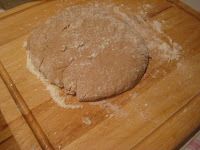This is the first blog I have written that has made my mouth water! I didn't like Christmas pudding as a child but I always loved the brandy sauce. Now I love it so much, I always make extra sauce and hide myself a helping of pudding for the end of the day (don't worry this isn't a secret my family knows already)!
There is some confusion about figgy pudding, as it is slightly different than the dense Christmas pudding that we eat that resembles moist fruit cake.
The Christmas pudding we recognize today is a Victorian dish made from suet, dried fruit, candied peel, breadcrumbs, spices, egg, grated carrots and apples. The Victorians shaped their puddings into a spherical shape and boiled them in a muslin cloth. ‘Stir up Sunday’ (the last Sunday before Advent) had become associated with the start of the pudding-making process, in order to allow it least a month to mature before being consumed on Christmas Day. At Christmas, the pudding is doused in brandy and set alight.
There are many traditions and superstitions surrounding the Christmas Pudding. Some traditions say to make the pudding by the 25th Sunday after Trinity, with 13 ingredients to represent Christ and his Disciples. Every member of the family is to take a turn stirring the pudding with a wooden spoon from east to west, in honor of the three kings. It is said that setting the brandy aflame represents Christ’s passion. A sprig of holly as garnish is a reminder of his ‘Crown of Thorns.’ Holly supposedly brought good luck and had special healing powers.
In 1664, it was banned by the Puritans as a custom unfit for people who followed the ways of God.
In 1714, King George I re-established pudding as part of the Christmas feast even though the Quakers strongly objected. Meat was eliminated from the recipe in the 17th century in favor of more sweets, and people began sprinkling it with brandy and setting it aflame when serving it to their guests. The Christmas pudding was not a tradition in England until it was introduced to the Victorians by Prince Albert. By this time the pudding looked and tasted as it does today. The traditional cooking time takes about eight hours, with preparation taking even longer due to extensive marinating. The longer the fruit is marinated in brandy, cider, or both, the better it tastes and this could take weeks!
Another tradition when I was growing up was to put a sixpence in the pudding before it was steamed. The person who found the coin was supposed to have luck that year. One of my favorite stores, Harvey Nichols, packages their pudding to look like a sixpence.
christmaspudding recipe
Don't worry you can still go out and buy one!
merry merry!













